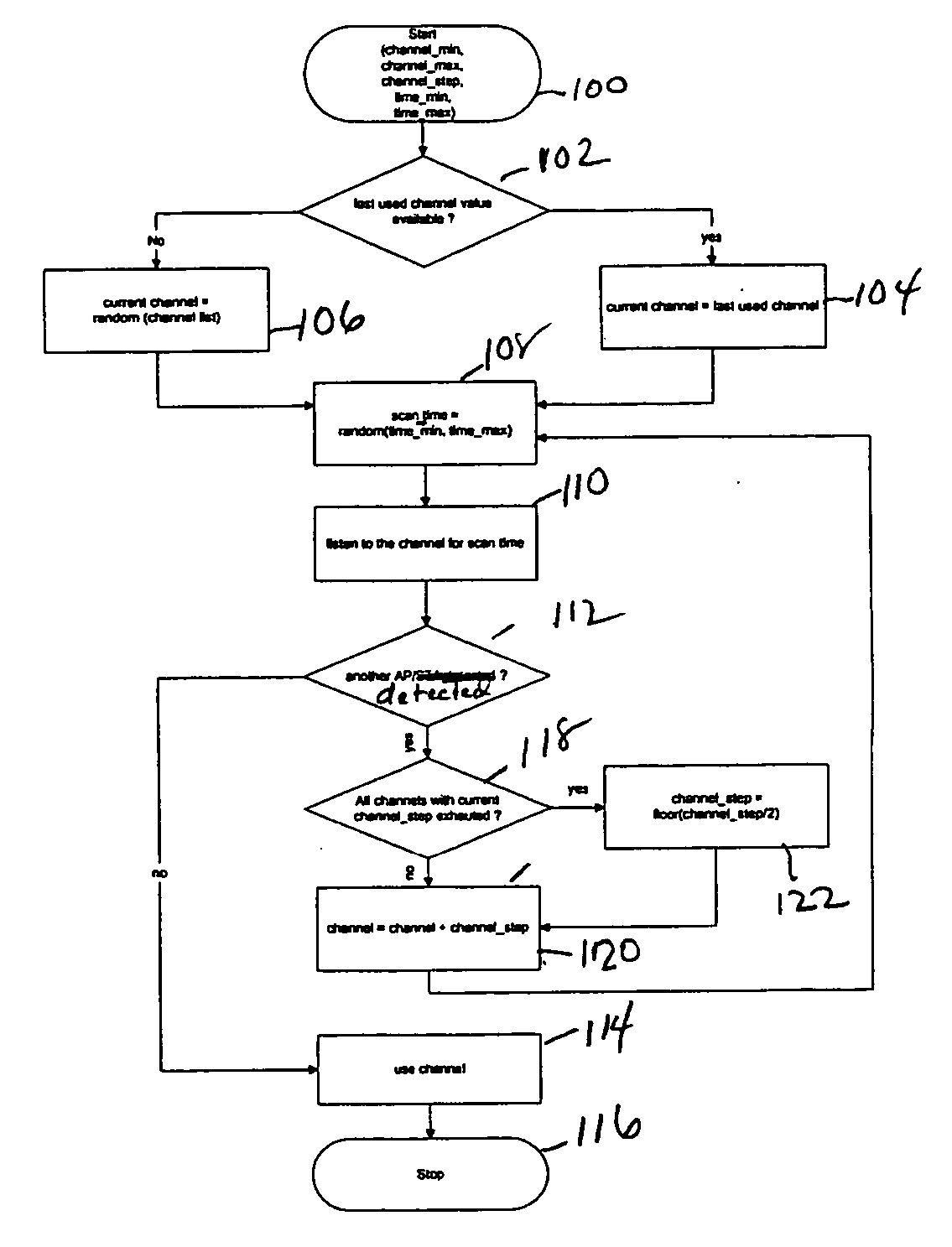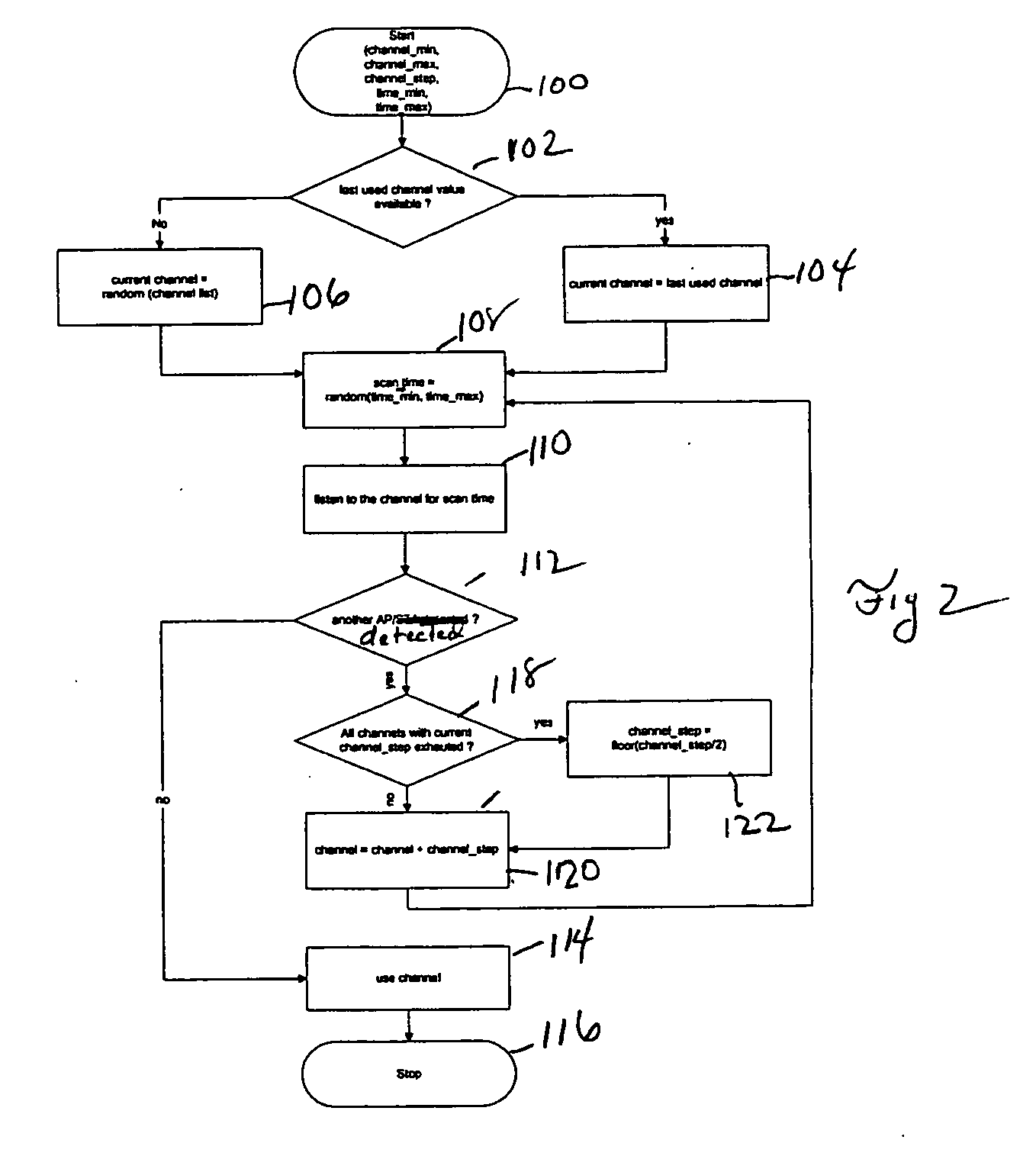Automatic channel selection in a radio access network
- Summary
- Abstract
- Description
- Claims
- Application Information
AI Technical Summary
Benefits of technology
Problems solved by technology
Method used
Image
Examples
example 2
[0023] Assume that the APs 18.sub.1, 18.sub.2, and 18.sub.3 within the radio access network 11.sub.1 use channels #1, #6, and #11, respectively. Further assume that AP 18.sub.4 in the same radio access network now commences operation and implements the channel selection method according to present principles. In implementing the channel selection method, assume that the AP 18.sub.4 selects the following parameter values: channel_min=1, channel_max=11, channel_step=5, time_min=500, time_min=1000. Additionally assume that AP 18.sub.4 did not store information about the previously used channel.
[0024] Using the channel selection method of the present principles, the AP 18.sub.4 will first select a channel in accordance with the relationship
current_channel=random(1, 6, 11)
[0025] Assume that AP 18.sub.4 selects channel #6 as in the previous example. Next, the AP 18.sub.4 selects the value for the parameter scan_time in accordance with the relationship:
scan_time=random(500,1000)
[0026] Assu...
example 3
[0032] This example describes scenario when two APs, such as APs 18.sub.2 and 18.sub.3 within the radio access network 11.sub.1, both startup simultaneously, while another AP, such as AP 18.sub.1 in the same network, currently uses channel #1. Assume that both APs 18.sub.2 and AP 18.sub.3 utilize the following parameter values: channel_min=1, channel_max=11, channel_step=5, time_min=500, time_min=1000. Also, assume that neither AP 18.sub.2 nor AP 18.sub.3 store information about the channel each previously used.
[0033] Using the method of the present principles, both of the APs 18.sub.2 and 18.sub.3 will each select a current channel as follows in accordance with the relationships:
[0034] For AP 18.sub.2
current_channel=random(1, 6, 11)
[0035] Assume AP 18.sub.2 has randomly selected channel #6.
[0036] For AP 18.sub.3
current_channel=random(1,6,11)
[0037] Also assume AP 18.sub.3 selects channel #6. If both AP 18.sub.2 and AP 18.sub.3 were to actually claim the same channel, severe interfer...
PUM
 Login to View More
Login to View More Abstract
Description
Claims
Application Information
 Login to View More
Login to View More - R&D
- Intellectual Property
- Life Sciences
- Materials
- Tech Scout
- Unparalleled Data Quality
- Higher Quality Content
- 60% Fewer Hallucinations
Browse by: Latest US Patents, China's latest patents, Technical Efficacy Thesaurus, Application Domain, Technology Topic, Popular Technical Reports.
© 2025 PatSnap. All rights reserved.Legal|Privacy policy|Modern Slavery Act Transparency Statement|Sitemap|About US| Contact US: help@patsnap.com



